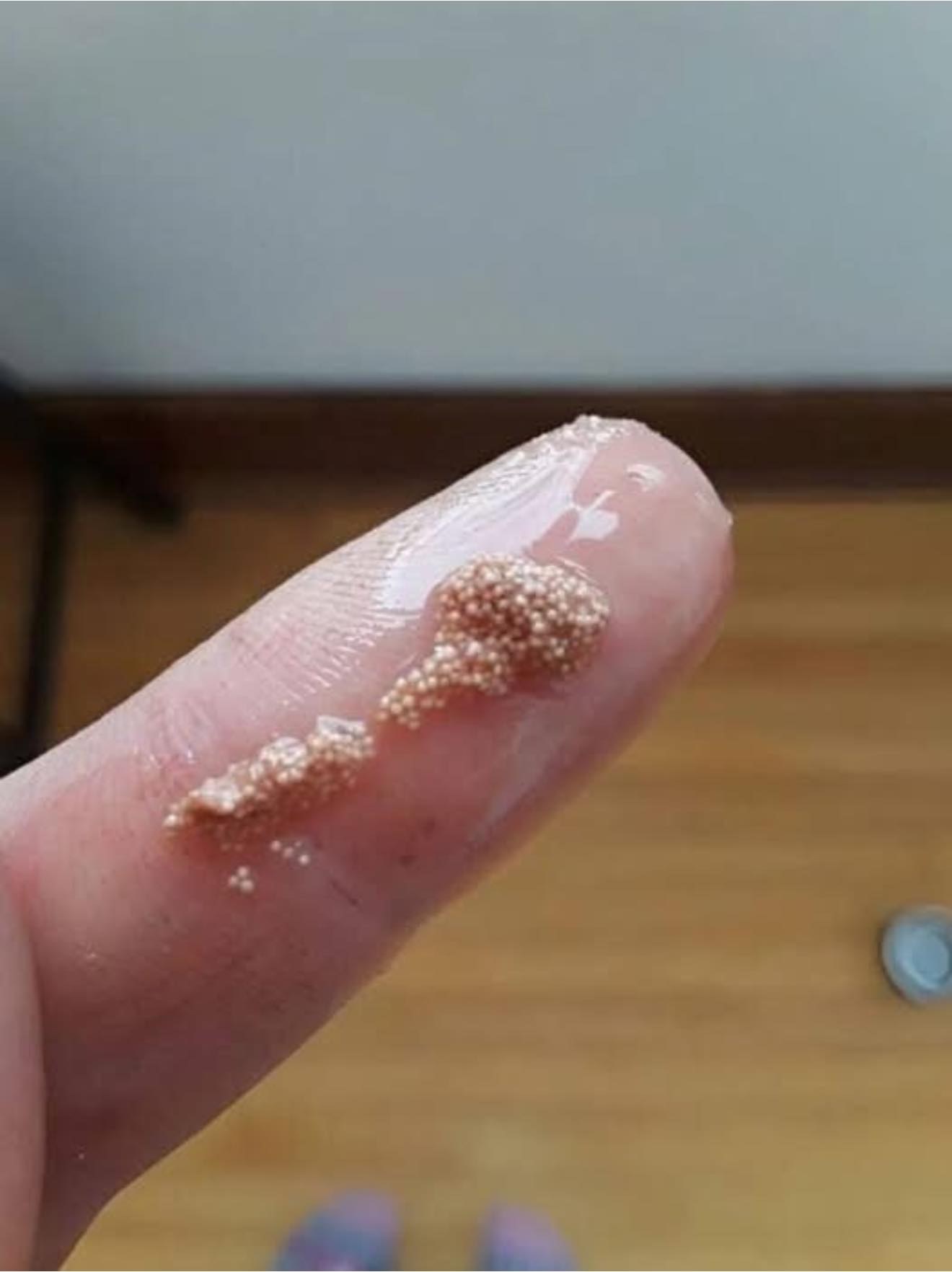One ordinary morning, I went through my usual breakfast routine, expecting nothing out of the ordinary. I had just returned from my regular grocery store, a place I trust for its consistently fresh products, fair prices, and high-quality food. As always, I pulled a fresh egg from the carton, cracked it open, and let it slide into the pan, anticipating the comforting sizzle of breakfast in the making. But what happened next startled me enough to make me stop in my tracks.

Instead of the smooth, clear egg white and bright yellow yolk I was expecting, I noticed strange, slimy lumps floating inside the egg white. They were translucent yet whitish, jelly-like in texture, and looked unsettling enough to ruin my appetite instantly. My first thought was alarming—were these insect eggs? Could the egg have been contaminated somehow? The sight alone made me hesitate, my mind racing through every worst-case scenario I could imagine. I reached for the trash can, ready to toss the whole thing out, but something made me pause. Curiosity outweighed my disgust, and I decided to find out what these mysterious lumps were before throwing away a perfectly good egg. I snapped a quick photo and started doing a little research online, hoping for answers.
To my surprise, what I discovered completely changed the way I looked at this so-called problem. According to food safety experts and poultry scientists, those slimy white clumps are not only harmless but also completely natural. They are called chalazae, a normal part of an egg’s structure that often goes unnoticed. Chalazae are made entirely of protein and serve a very important purpose inside the egg—they hold the yolk in place, keeping it centered and protected as the egg develops. These thread-like structures act like tiny cushions, making sure the yolk doesn’t get damaged as the egg is handled or moved around.
Depending on the hen’s health, diet, and age, these chalazae can appear more prominent in some eggs than others. In fact, eggs that are fresher or straight from the farm tend to have more visible chalazae because they haven’t gone through any bleaching or processing that might make them less noticeable.
Hens fed diets high in protein or calcium often produce eggs where these structures stand out more clearly, and in some cases, stressed hens may lay eggs with small specks or slightly uneven textures, none of which are harmful to eat. What I had feared were insect eggs or signs of contamination turned out to be nothing more than natural protein strands. There was no strange smell, no discoloration, and no sign of bacteria or spoilage—just an unfamiliar part of the egg that I hadn’t paid attention to before. Relieved, I went ahead and cooked the egg as planned. Once it was on the plate, it tasted exactly like every other egg I had ever eaten—no odd textures, no strange flavors, just the same delicious, protein-packed breakfast I’d been enjoying for years. That experience completely changed my perspective on what we sometimes think of as “imperfections” in food.
It was a reminder that not everything unfamiliar or unexpected is bad. Nature has its own designs, and sometimes they show up in ways we don’t recognize, but they are perfectly normal and safe. Since that morning, I no longer panic when I spot a chalaza or any other harmless variation inside my eggs. Instead, I take it as a sign that the egg is real, fresh, and unprocessed, just as nature intended. So if you ever crack an egg and notice a slimy lump or unusual stringy bit floating inside, don’t be alarmed. It’s not a bug infestation or contamination; it’s simply how eggs are made, a tiny piece of natural architecture doing its job to protect the yolk. Understanding these little quirks makes us appreciate our food more and worry a whole lot less about things that aren’t really a problem at all.





